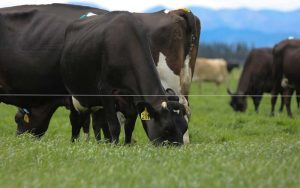
In May, the government released its plan to slash damaging gases which included plans for the Centre for Climate Action on Agricultural Emissions.
ANZCO Foods, Fonterra, Ngāi Tahu Holdings, Ravensdown, Silver Fern Farms and Synlait have joined the partnership, with industry funding matched by the government.
Agriculture Minister Damien O’Connor said initial indicative commitments would see a combined investment of about $172 million over the next four years.
About $7.75m has been kicked in by industry this financial year, with contributions to increase in the coming years and as more partners sign on.
“We are committed to reducing agricultural emissions and for this we need to get new tools and technology into the hands of farmers as soon as possible,” O’Connor said.
“This represents a new and exciting way of working. By working together, we can help farmers shift the dial sooner.
“New Zealand can be, and should be, a leader in developing innovative new tools and technologies to reduce emissions on-farm, and be the one other countries can look to.”
The centre was announced as part of the $338.7m in funding over the next four years to for new tools and technologies to reduce agricultural emissions.
The agriculture sector contributes 50 percent of New Zealand’s gross greenhouse gas emissions, and around 91 percent of biogenic methane emissions.
The government has committed to a net-zero target for 2050 and reducing biogenic methane emissions by 10 per cent by 2030, relative to 2017 levels, and 24 to 47 per cent lower by 2050.























